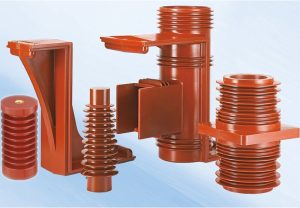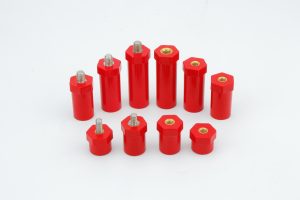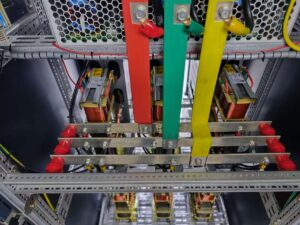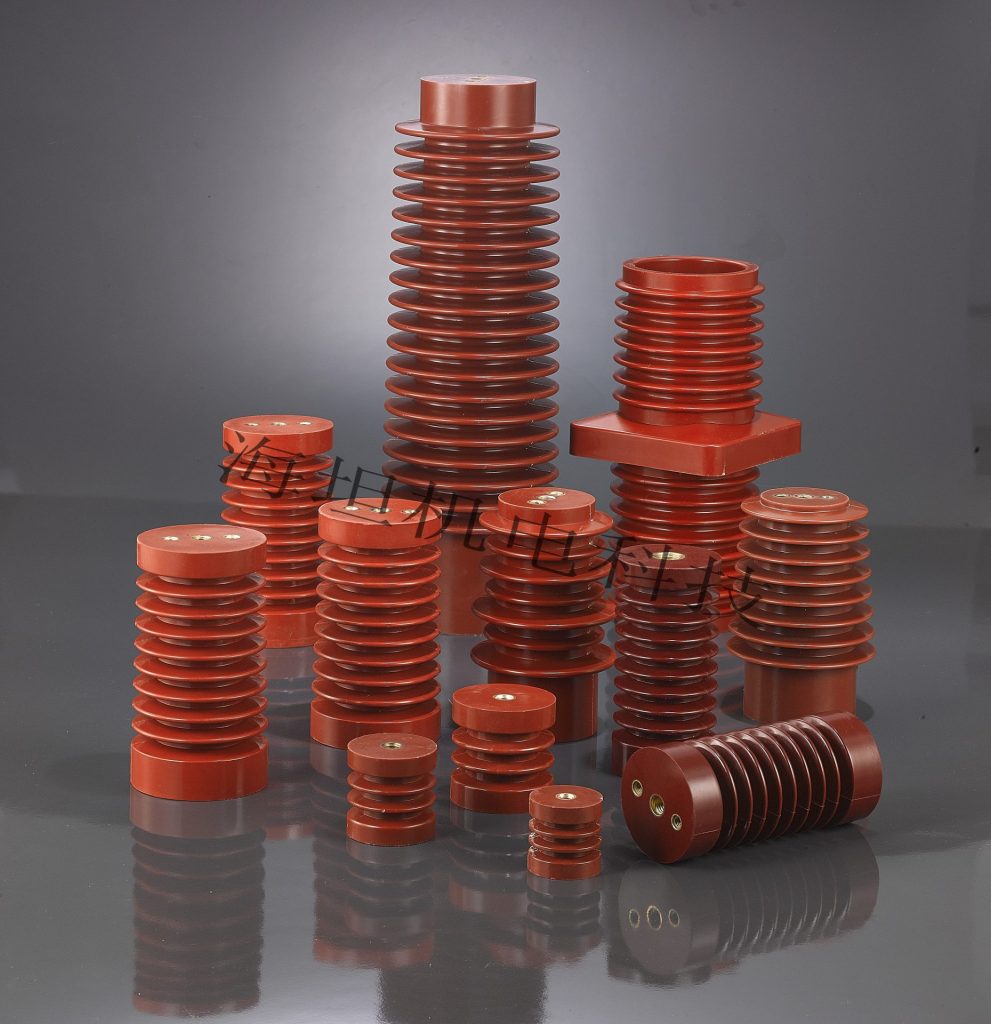How High Voltage Insulators and Low Voltage Insulators Differ in Their Usage
When it comes to electrical systems, insulators play an essential role in ensuring the safety and efficiency of power transmission and distribution. At present, the most widely used are high-voltage insulators and low-voltage insulators. These two types of insulators serve different purposes and are designed to withstand distinct electrical environments. In this blog, we’ll dive deep into how these two types of insulators differ in their usage, construction, installation, and maintenance. Grab a cup of coffee, and let’s get started!
1. The Role of High Voltage and Low Voltage Insulators in Electrical Systems
When I first started learning about electrical systems, I was surprised by how vital insulators are to keep everything running smoothly. Imagine trying to use electrical devices without them—yikes, right? Insulators prevent the flow of electricity from unintended areas, ensuring that power is transferred safely to where it’s needed.In any electrical system, insulators play a crucial role. However, the jobs of high-voltage and low-voltage insulators are far from identical.
High voltage insulators are the unsung heroes of electricity transmission networks. They’re used in power lines that carry electricity over long distances, sometimes hundreds of miles. They manage the huge amounts of electrical current that flow through high-voltage power lines that carry electricity over long distances.
Key role: They prevent electricity from leaking into the environment and causing disruption or danger.
Key challenge: They must withstand extreme voltage levels (over 100kV) and be exposed to environmental factors such as lightning strikes, high winds and moisture.
Low Voltage Insulators
Low voltage insulators, think about the electrical wiring in your home. They’re used to separate the conductors carrying electricity from each other and from the surrounding structures. they are generally used in power systems that operate at much lower voltage levels (less than 1000V). These insulators are used for shorter distances, such as within homes, offices, and small businesses.
Key role: To prevent electrical shorts and ensure the safety of power distribution within buildings and localized areas.
Key challenge: They need to keep the electricity contained in smaller, less demanding systems.
Both types are essential, but their roles in the electrical system are distinctly different. High voltage insulators need to handle far more significant electrical stress, while low voltage insulators focus on safety within smaller, less complex networks.
2.Key Differences in Material and Construction for High and Low Voltage Insulators
Now that we know the roles of these insulators, let’s talk about how they’re made. High voltage and low voltage insulators need to be constructed with different materials and designs to handle their respective challenges.
High Voltage Insulators
Material: These insulators are typically made from ceramics, glass, or composite materials that can withstand the enormous stress of high-voltage currents.
Construction: The design often includes multiple discs or sheds (the cone-like structures you might see on power lines) to increase the surface area, which helps prevent electrical arcs from jumping between the insulator and the tower.
Design features: High voltage insulators are built for durability in extreme weather conditions, with extra resistance to wear, moisture, and UV damage.

Low Voltage Insulators
Material: Low voltage insulators are usually made from less robust materials like plastic, porcelain, or rubber, which are still effective but less expensive.
Construction: These insulators are smaller, simpler, and are usually single pieces designed to fit more tightly onto smaller power lines or electrical appliances.
Design features: They are designed to keep electricity confined to smaller spaces and prevent leakage, often in controlled environments like homes or factories.

Material and Construction Summary
High voltage insulators: Durable, weather-resistant materials like ceramics, glass, and composites; designed for long-term exposure to extreme conditions.
Low voltage insulators: Cost-effective materials like plastic and porcelain; built for smaller, less harsh environments.
3.How Installation Procedures Vary for High Voltage vs Low Voltage Insulators
Installing an insulator may sound like a straightforward task, but trust me, it’s not as simple as just snapping one into place. The installation procedures vary significantly between high-voltage and low-voltage insulators. The differences are mainly due to the scale of the project and the level of safety required.
High Voltage Insulator Installation
Heavy-duty equipment: High-voltage insulators often require cranes, ladders and special tools for installation, especially when dealing with large towers or power lines that are hundreds of feet off the ground.
Skilled professionals: Installing these insulators is a high-risk job and typically requires trained professionals with safety certifications.
Step-by-step process: The installation is methodical and involves inspecting the power line, preparing the insulator, and then carefully mounting it on the transmission tower.
Low Voltage Insulator Installation
Simpler setup: For low-voltage systems, installation is much more straightforward. Many insulators are installed directly onto cables or devices with minimal tools.
For example: to install a low-voltage insulator in a distribution cabinet, we only need to directly put the screws at the end of the insulator against the position where the insulator is installed in the distribution cabinet and tighten it.

Easier to replace: Low voltage insulators can often be replaced by homeowners or technicians without needing cranes or specialized equipment.
Faster installation: Because the power systems are smaller, installation time is much shorter.
4. Maintenance Requirements: High Voltage vs Low Voltage Insulators
Maintenance is essential to ensure the long-term functionality of insulators, especially for those used in high-voltage environments where failure could have catastrophic results. Let’s break down the key differences.
High Voltage Insulators
Cleaning: High voltage insulators must be cleaned regularly to prevent dirt, pollution, and other debris from creating conductive pathways that could lead to electrical failures.
Inspection: Because they are exposed to more extreme conditions, high-voltage insulators require more frequent inspections. Trained professionals use tools like thermal imaging and electrical testing to ensure everything is functioning properly.
Replacement: Given their exposure to extreme elements, these insulators might need to be replaced every 10 to 15 years, depending on wear and tear.
Low Voltage Insulators
Cleaning: Low voltage insulators require less frequent cleaning as they aren’t exposed to the same degree of environmental hazards.
Inspection: While inspections are still necessary, they tend to be less frequent. You might just check them from time to time to make sure there’s no visible damage or signs of wear and tear.
Replacement: Low voltage insulators tend to last longer than high voltage insulators and can often last for several decades before needing to be replaced.
5. Usage Scenarios: Where Are High Voltage and Low Voltage Insulators Used?
The usage scenarios for high and low voltage insulators are as different as night and day. Let’s take a look at where you might encounter them.
High Voltage Insulators
Power transmission lines: These insulators are most commonly found in power transmission towers, helping to carry electricity over long distances.
Substations: High voltage insulators are used in substations where electrical voltages are increased or decreased.
Renewable energy installations: Solar farms and wind turbines, which often operate at high voltages, also require high voltage insulators.
Low Voltage Insulators
Residential wiring: Low voltage insulators are used in electrical systems within homes, including in switches, outlets, and household appliances.
Small businesses and industrial buildings: These insulators are also found in the wiring and electrical systems of smaller buildings and factories.
Power distribution systems: Low voltage insulators are used to help distribute power from substations to homes and businesses.
6. FAQs
Q: What is the main difference between high voltage and low voltage insulators?
A: The primary difference lies in the voltage they handle. High voltage insulators are designed for high power transmission over long distances, while low voltage insulators are used for household or smaller commercial systems.
Q: Can high voltage insulators be used in low voltage applications?
A: While they can technically work, high voltage insulators are over-engineered for low voltage systems, making them more expensive and unnecessary.
Q: How long do high voltage insulators last?
A: Typically, high voltage insulators last between 10 to 15 years, depending on environmental conditions and maintenance.
Q: How do I maintain low voltage insulators?
A: Low voltage insulators require less frequent maintenance, mostly cleaning and occasional inspections to ensure they are free from dirt and debris.
7. Conclusion
In conclusion, understanding the differences between high voltage insulators and low voltage insulators is essential to appreciating the role they play in electrical systems. While both types of insulators are crucial for safety, their applications, materials and maintenance requirements are very different.
Whether you’re an electrician, a DIY enthusiast, or simply someone curious about electrical systems, I hope this post has shed some light on the ins and outs of insulators.Remember, when it comes to electrical systems, insulators are the unsung heroes that make it all work smoothly. And that’s a wrap on our exploration of high voltage and low voltage insulators! I hope you found this as interesting as I did.
--- END ---
© Copyright 2024 China Haitan Electromechanical Technology Co., Ltd. All rights reserved.SUPPORT BY:JUNJ Privacy Policy

 E-mail:
E-mail:  No. 20 Lingyun Road, Dongfeng
No. 20 Lingyun Road, Dongfeng 
